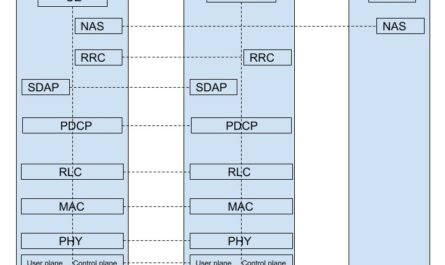RRC State Machine in 5G NR
In all wireless communication systems, the device can be in different states. The state of the Device depends upon the traffic activity. Same goes for 5G NR. The device in 5G can be in three different RRC states. We will discuss RRC State Machine and RRC context and Mobility management in 5G NR.
1. RRC Idle
- No RRC context
- Data transmission Not possible
- No core network connection
- No mobility management
2. RRC inactive
- RRC Context established
- Data transmission Not possible
- Core network con. established
- No mobility management
- Sleeps most of the time to reduce battery consuption
- Periodically wakes up to receive paging messages
- No uplink synchronization. For any uplink transmission, the device first needs to go through RACH procedure.
3. RCC connected
- RRC Context established
- Data transmission Not possible
- Core network con. established
- Mobility management by radio access network
- Uplink time alignment may or may not exist. To send uplink data, device need to ask for uplink grant using PUCCH or RACH procedure.
The RRC Idle and RRC connected states are similar to LTE. RRC inactive has been introduced in 5G NR. If you carefully look, there is a core network parameter in each states. So, we have core network states in 5G as well. There are only two core network states.
1. CN_IDLE
2. CN_CONNECTED
RRC context in 5G NR
- RRC Context established: This means that all the parameters required for communication between the radio access network and the device are known to both the entities. The device is in CN_CONNECTED mode. The device gets a cell radio network temporary identifier (C-RNTI) for communication.
RRC Inactive State.
From Network perspective the device is in CN_CONNECTED state and the device is already in RRC connected state, so, in this case transition to RRC connected state is going to be very fast. This RRC state is introduced in 5G NR to save time while moving the device to connected state. The device can go to sleep mode like RRC_IDLE state. UE will manage the Mobility through cell reselection in rrc inactive state.
Mobility management in Idle state and Inactive State
The purpose of mobility management is to make sure that the device is reachable by the network and the network sends paging messages to the area where the device was last known.
Device will manage the Mobility management in Idle state and Inactive State by itself. When the device moves from one place to another then it does cell reselection and update it’s current location to the network. This way the network will have the latest updated device location all the time.
Click here for initial access and cell selection call flows in 5g nr network.




